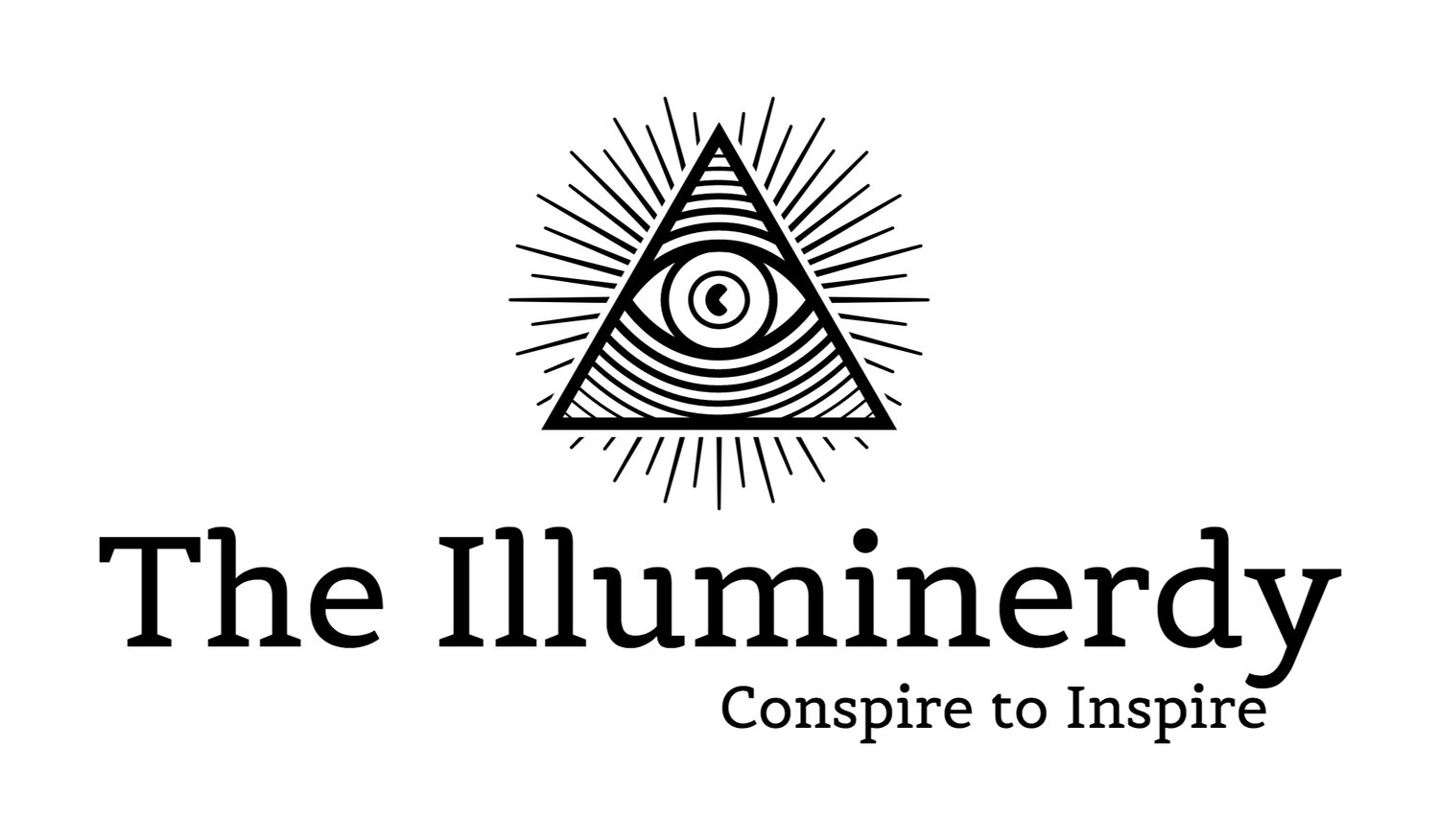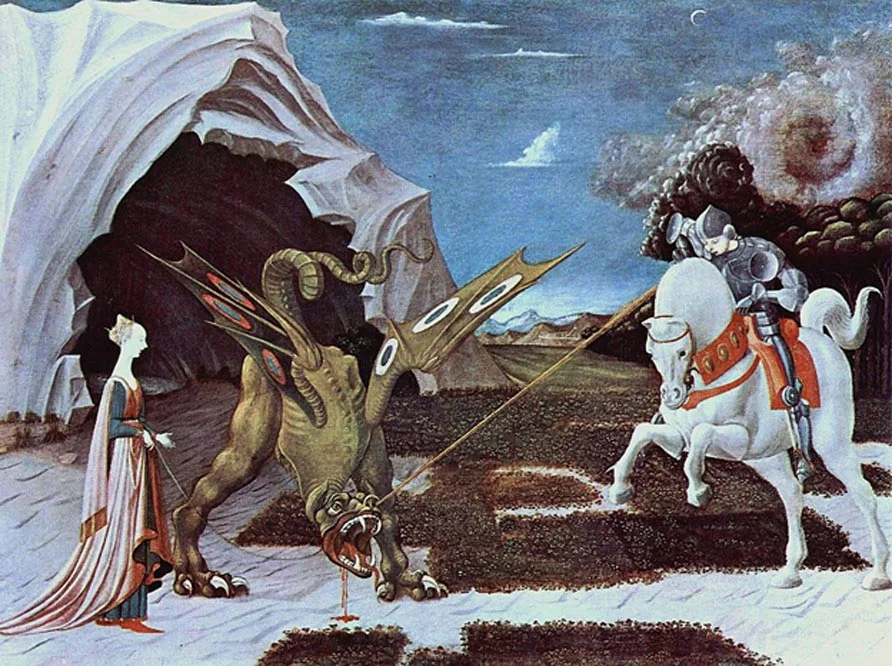You Only Live Twice
It's October, that time of the year when the Illuminerdy's thoughts turn to monsters. We've talked about some very literal monsters quite recently, but it's worth remembering that in real life there are few worse monsters than man (or woman, as in the case we'd like to draw your attention to today). In my usual search for the weirder points of Weird History, I recently came across a few scattered references to a murderous 19th Century Connecticut cult known as the Wakemanites. Few easily accessible primary sources have survived, but I eventually managed to track down two different sets of secondary sources that outline the tale well: Michael Bielawa's Wicked New Haven and perhaps more obviously Robert Schneck's Mrs. Wakeman vs. the Antichrist. Regardless, dear reader, there's a lot of game potential in tying the fate of the world to an elderly (and likely unhinged) widow. Just hear me out, OK?
The End of the World
Rhoda Wakeman, nee Sly, was a hard working housewife and mother of 15...or 17, depending on who you ask. Only 9 children survived. She had married an emotionally (and, very probably, physically) abusive distiller named Ira in 1800 at age 24. By 1825, the Wakemans' relationship had soured. Mr. Wakeman began threatening to kill his wife on an almost nightly basis, sometimes bringing a sharpened razor with him to their bed, as if to underscore the weight of his threats. Ira Wakeman continued his threats for seven years, evidently also occasionally threatening to kill himself...0n orders from the Devil, of course. One night after having made what he believed was a profitable deal with Hell to protect his soul from eternal damnation after killing his wife, Ira sat down next to Rhoda, threatened her with the razor, loudly and repeatedly cursed her, and then pulled a fiery brand from the fireplace and stabbed her in the heart.
According to Rhoda, she died instantly, and was greeted by Jesus Christ and a host of angels in heaven. By her own account, Mrs. Wakeman remained dead for seven hours, during which she was charged by God with delivering the good news, and given the gift of prophecy to aid her in her mission. Before returning her to the world of the living, two sword-wielding angels warned Mrs. Wakeman that the Antichrist and its agents would do everything they could to kill her, because the ongoing existence of the world was linked irrevocably to Mrs. Wakeman's spirit: if she died (again), the world would simply disappear.
When she awoke, she began gathering followers with tales of her heavenly encounters and contemporary prophecies, eventually forging her dozens of hangers on into a small but fanatical cult, supporting herself and her brother Samuel "Uncle Sammy" Sly by selling potions and elixirs with reputedly magical powers from a stall outside a local cemetery.
The Devil of New Haven
Perhaps more importantly, when Mrs. Wakeman returned from the spirit realm, she realized the source of her husband's constant threats against her life -- he had been possessed by a demon...the same demon that would haunt her for more than 20 years. When Ira Wakeman died in 1833 -- under mysterious circumstances -- the demon supposedly entered Mrs. Wakeman's son-in-law, Eben Gould (which, admittedly, is exactly the kind of name you'd expect someone who had been possessed by a demon to have). While possessing Mr. Gould, the demon made no known attempts against Rhoda's life, despite the fact that Mrs. Wakeman and her followers frequently provoked the man. Perhaps as a result, by 1855, the demon had relocated, taking possession of a member of Mrs. Wakeman's inner circle: a Wakemanite, as they were then called, named Amos Hunt.
Unaware that he was being influenced by infernal power, Hunt decided to attempt to prove Wakeman's oft-claimed immortality by poisoning her. The arsenic-laced cake Hunt gave to the widow Wakeman some serious indigestion, but did not kill her. She was, after all, God's messenger on Earth. Wakeman insisted that there was no way a mundane poison like Arsenic could have affected her, and declared that the cake had been prepared with witchcraft using "the brains of a man, the oil of men's bones, the eyes of dogs, the brains of cats, the hearts of dogs, the eyes of roosters, garden basil, topaz stone, copper, platin[um], and the entrails of common toads." Wakeman's followers shunned (and publicly damned) Hunt, while "Uncle Sammy" demanded restitution from the demon-haunted man. The matter was settled for $500, and the demon moved on to dominate another Wakemanite: Justus Matthews.
Murders Most Foul
While the demon had hidden its presence from Wakeman and her followers before being discovered before, its affect on Matthews was immediately apparent. Upon returning home after the unwitting encounter with the devil's brood, Matthews' wife went into convulsions; when he returned to Wakeman's cottage to attend the usual service with the rest of Wakeman's followers, the widow suddenly fell ill. With shaking hands, she pointed out Matthews, and declared that the demon who would end her life -- and with it, the world -- had returned.
A confused and fearful Matthews asked the congregation to drive the evil spirit from his body. Mrs. Wakeman's inner circle agreed, but warned the young man that the exorcism would have to be performed at Wakeman's cottage. The cult chose 23 December 1855 for the ceremony. A full moon, of course. Matthews was bound, gagged, and blindfolded...and then beaten mercilessly with supposedly enchanted witch hazel club, stabbed, and then slashed across the throat with a pocket knife by Uncle Sammy in an attempt to drive the demon out.
Matthews' death may have unhinged another of Wakeman's followers, Charles Sanford, who killed two more upstanding members of the community a week later with an axe. Unless, of course, the devil made him do it.
Hero or Villain?
The widow Wakeman was clearly a hero in her own mind, but you'd probably get the most use out of her as a villain, or at least as a pawn of darker forces using her as a proxy. We have only Wakeman's words about her husband's abusive tirades and Satanic dealmaking, and her subsequent behavior certainly has a sinister cast. Could Ira's attempts to end his wife's life with a burning stake through the heart suggests that Prophetess of New Haven might make a good villain in a game of 19th Century Night's Black Agents (which we have talked about before), or as the center of a competing clan in a Vampire game.
But Mrs. Wakeman doesn't need to be a member of the undead to make this work -- her potions and elixirs could be lost alchemical formulas or straight up witchcraft...which might explain why the Prophetess was so easily able to run through the ingredients of a witch's brew after Amos Hunt's failed attempt to poison her. Or maybe she's just a serial killer. How many men before Matthews (and after her husband) had the widow Wakeman actually killed?
Although a little late historically, there's nothing preventing you from using the Wakemanites as a prototype for a fringe cult in your D&D game. Maybe your PCs are drawn to the widow by her claims that she is beset by demons who wish to end the world by killing her. Even an entirely mercenary group of murder hobos could be drawn into the fun with the enticement of enough money to protect the widow Wakeman from her demon-possessed enemies...or, if duped, to serve as assassins to a woman who may as well be possessed by demons of her own.
Or maybe Wakeman wasn't lying. Maybe she's still out there, secretly protecting herself (and the world) by hiding in the shadows. Or perhaps she failed -- killed by the Antichrist, and with her, the world -- and the life we know is the (secretly) hellish result of a world spinning long after it really ended.



